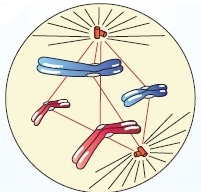Check the below NCERT MCQ Questions for Class 11 Biology Chapter 14 Respiration in Plants with Answers Pdf free download. MCQ Questions for Class 11 Biology with Answers were prepared based on the latest exam pattern. We have provided Respiration in Plants Class 11 Biology MCQs Questions with Answers to help students understand the concept very well. https://mcqquestions.guru/mcq-questions-for-class-11-biology-chapter-14/
Respiration in Plants Class 11 MCQs Questions with Answers
Respiration In Plants Class 11 MCQ Chapter 14 Question 1.
R.Q is ratio of
(a) CO2 produced to substarate consumed
(b) CO2 produced to O2 consumed
(c) oxygen consumed to CO2 produced
(d) oxygen consumed to water produced
Answer
Answer: (b) CO2 produced to O2 consumed
Respiration In Plants MCQ Chapter 14 Class 11 Question 2.
Angiosperm pollen is generally released at the
(a) 1 – celled stage
(b) 2 – celled stage
(c) 3 – celled stage
(d) male gamete formation stage
Answer
Answer: (b) 2 – celled stage
Respiration Class 11 MCQ Chapter 14 Question 3.
The complete oxidation of pyruvate take place in
(a) cell cytoplasm
(b) inner mitochondrial membrane
(c) mitochondrial matrix
(d) nucleus
Answer
Answer: (c) mitochondrial matrix
Explanation:
Pyruvate is transported from cytoplasm into the mitochondria. The complete oxidation of pyruvate takes place in matrix of mitochondria.
Respiration In Plants MCQs Chapter 14 Class 11 Question 4.
Which enzyme catalyses the reaction below? Pyruvic acid → Carbon dioxide + Ethanol
(a) Pyruvic acid decarboxylase
(b) Alcohol dehydrogenase
(c) None of these
(d) Both of these
Answer
Answer: (d) Both of these
Explanation:
In fermentation, the incomplete oxidation of glucose is achieved under anaerobic conditions by sets of reactions in which pyruvic acid is converted to carbon dioxide and ethanol.
The enzymes involved are pyruvic acid decarboxylase and alcohol dehydrogenase.
MCQ Of Respiration In Plants Class 11 Chapter 14 Question 5.
TCA cycle was discovered by
(a) Otto Meyerhof
(b) Hans Kreb
(c) Gustav Embden
(d) All of these
Answer
Answer: (b) Hans Kreb
Explanation:
TCA cycle or tricarboxylic acid cycle was given by Hans Kreb. So it is also called as Kreb cycle.
Respiration In Plants MCQ Class 11 Chapter 14 Question 6.
Which one of the following describes the spikelet of a cereal or grass plant
(a) inferior ovary
(b) dehiscent fruit
(c) pair of glumes
(d) fused calyx
Answer
Answer: (c) pair of glumes
Chapter 14 Biology Class 11 MCQs Question 7.
Malacophily means
(a) pollination by wind
(b) pollination by water
(c) pollination by insects
(d) pollination by snails
Answer
Answer: (d) pollination by snails
Respiration In Plants Class 11 MCQs Chapter 14 Question 8.
Herkogamy is a contrivance for
(a) allogamy
(b) autogamy
(c) chasmogamy
(d) cleistogamy
Answer
Answer: (a) allogamy
Class 11 Biology Chapter 14 MCQ Question 9.
Out of 36 ATP molecules produced per glucose molecule during respiration
(a) 2 are produced outside glycolysis and 34 during repiratory chain
(b) 2 are produced outside mitochondria and 34 inside the mitochondria
(c) all the formed inside mitochondria
(d) 2 during glycolysis and 34 during kreds cycle
Answer
Answer: (b) 2 are produced outside mitochondria and 34 inside the mitochondria
Class 11 Respiration In Plants MCQ Chapter 14 Question 10.
Complete the reaction. _________ + O2 → CO2 + _______ + Energy
(a) C6H12O6, 2H2O
(b) C12H22O11, 6H2O
(c) C6H12O6, 6H2O
(d) C12H22O11, 11H2O
Answer
Answer: (c) C6H12O6, 6H2O
Explanation:
C6H12O6 + 6O2 → 6CO2 + 6H2O + Energy
Question 11.
The significant morphological feature of passion flower is the presence of
(a) numerous corolla
(b) androphore
(c) gynophore
(d) androgynophore
Answer
Answer: (b) androphore
Question 12.
The final electron acceptor in electron transport chain is
(a) Cytochrome C
(b) FADH
(c) NADH
(d) oxygen
Answer
Answer: (d) oxygen
Explanation:
Oxygen acts as the final electron acceptor in electron transport chain.
Question 13.
Which of the following acts as mobile carrier for transfer of electrons between complex III and complex IV?
(a) Cytochrome c
(b) cytochrome a3
(c) cytochrome a
(d) FADH2
Answer
Answer: (a) Cytochrome c
Explanation:
Cytochrome c is a small protein attached to outer surface of the inner membrane and acts as mobile carrier for transfer of electrons between complex III and IV.
Question 14.
Aleurone layer takes part in
(a) protection of delicate embryo
(b) enzyme synthesis
(c) transfer of food to cotyledons
(d) transfer of food from cotyledons to embryo tips
Answer
Answer: (b) enzyme synthesis
Question 15.
A characteristic of drupe is
(a) fleshy seed coat
(b) stony pericarp
(c) stony mesocarp
(d) stony endocarp
Answer
Answer: (d) stony endocarp
Question 16.
Incomplete oxidation of glucose into pyruvic acid with several intermediate steps is know as
(a) TCA pathway
(b) Glycolysis
(c) Hms pathway
(d) Glycolysis
Answer
Answer: (b) Glycolysis
Question 17.
End product of glycolysis is
(a) acetyl Coenzyme A
(b) PEP
(c) pyruvate
(d) OAA
Answer
Answer: (c) pyruvate
Explanation:
The end product of glycolysis is pyruvate.
Question 18.
Respiratory enzymes are located in
(a) mitochondrial matrix
(b) Cristae
(c) perimitochondrial space
(d) outer membrane
Answer
Answer: (b) Cristae
Question 19.
Respiratory quotient of carbohydrates is
(a) 0.9
(b) 1.2
(c) 1
(d) 0
Answer
Answer: (c) 1
Explanation:
RQ i.e. respiratory quotient is 1.
RQ = volume of CO2 evolved / volume of O2 consumed
Question 20.
One molecule of glucose yields ___ ATP molecules in aerobic respiration.
(a) 2
(b) 16
(c) 38
(d) 42
Answer
Answer: (c) 38
Explanation:
One molecule of glucose yields 38 molecules of ATP during aerobic respiration.
We hope the given NCERT MCQ Questions for Class 11 Biology Chapter 14 Respiration in Plants with Answers Pdf free download will help you. If you have any queries regarding CBSE Class 11 Biology Respiration in Plants MCQs Multiple Choice Questions with Answers, drop a comment below and we will get back to you soon.
